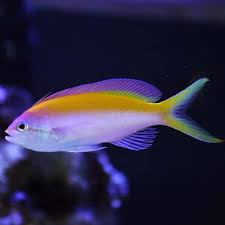The Dragon as a Symbol in Lessons of Love and Compassion

Throughout history, the dragon has been a captivating and powerful symbol in various cultures, representing an array of ideas such as power, strength, and mystery. Yet, beyond these traits, the dragon also embodies concepts like love, compassion, and emotional depth, which play crucial roles in shaping human relationships and societies. In modern contexts, the symbolism of the dragon has evolved, finding relevance in teachings about love and compassion, areas often seen as distinct from the typically fierce and powerful nature of the mythical creature. This article explores the dragon as a symbol in the context of love and compassion, investigating how this ancient figure has been integrated into cultural narratives, lessons, and modern artistic expressions aimed at promoting emotional growth and human connection.
The Dual Nature of the Dragon: Power and Compassion
The dragon is often portrayed as a dual-natured being. On one hand, it is fierce, commanding respect and instilling fear through its vast power. On the other hand, the dragon is also a symbol of balance, harmony, and even kindness, particularly in Eastern cultures. In Chinese mythology, for example, the dragon is typically regarded as a benevolent, caring figure. It is not only associated with royal authority and prosperity but also with protection, fertility, and the maintenance of balance in the world. These qualities are not typically seen as synonymous with aggression but as vital to ensuring the well-being of society.
In the context of love and compassion, the duality of the dragon offers an important lesson. The dragon’s strength is not merely for domination, but for protection and the nurturing of those it loves and cares for. The ability to love fiercely, to protect others, and to show compassion through action, all while maintaining one’s power and dignity, is a key theme that the dragon embodies. In modern society, these lessons resonate as they can teach us that love and compassion do not mean weakness, but rather strength and resilience in the face of challenges.
The Dragon as a Protector in Love
The concept of protection in love is a fundamental aspect of the dragon’s symbolism. In many myths, the dragon acts as a guardian—of treasure, of kingdoms, or of sacred lands. This protective aspect can be directly applied to the idea of love as a form of safeguarding those we care about, ensuring their safety, happiness, and well-being. For instance, in the legends of knights and dragons, the creature is often guarding something valuable, whether it’s a princess, a kingdom, or an important artifact. The knight or hero who defeats the dragon does not do so to destroy, but to protect and restore balance.
Similarly, in lessons about love and compassion, the dragon represents the strength needed to protect loved ones and to fight against challenges that threaten their well-being. Love, in this context, is not passive but active—requiring one to stand firm, to defend, and to act with courage. The dragon’s role as a protector speaks to the idea that love, in its deepest and most transformative form, requires sacrifice, action, and an unwavering commitment to the people we care about.
This lesson is particularly important in the modern world, where love is often tested by external pressures such as societal expectations, personal struggles, and global crises. The dragon, therefore, symbolizes the strength to rise above these pressures and to protect the integrity of one’s love for others, whether it be a romantic partner, a family member, or a community.
The Compassionate Dragon: Embracing Vulnerability
While dragons are often associated with fierce power, their capacity for compassion is equally central to their symbolism. In Eastern cultures, particularly in Chinese mythology, the dragon is a creature of great wisdom and benevolence, believed to bring rain to nourish the earth and protect the people from harm. This image of the dragon as a compassionate figure who ensures prosperity and well-being reflects the importance of nurturing and selfless love in human relationships.
The lesson here is that love is not just about providing protection but also about offering compassion, understanding, and care. Just as the dragon can offer the gift of rain to nourish the earth, love in its highest form is a force for nurturing growth—whether it be the growth of an individual, a family, or a community. Compassion, in this sense, is the heart of love, as it enables individuals to understand the suffering of others and to respond with empathy and kindness.
The dragon’s compassion also teaches that true love requires vulnerability. While strength and protection are vital elements of love, the ability to show vulnerability, to embrace imperfections, and to offer support in times of need, are essential aspects of genuine love. By looking at the dragon through this lens, one can appreciate that love is not only about offering strength and protection but also about being open to the needs of others and responding with tenderness and understanding.
The Dragon in Love: Lessons of Balance and Harmony
In many cultures, the dragon is a symbol of balance and harmony, as it represents the convergence of multiple natural forces. In Chinese philosophy, dragons are often associated with the forces of yin and yang, the dualities that govern the universe, such as light and dark, masculine and feminine, strength and gentleness. The dragon, as a symbol of these forces, teaches the importance of balance in love and compassion. Just as the dragon is a harmonious blend of seemingly opposing elements, love must also embody a balance of strength and tenderness, selflessness and respect, passion and calm.
In relationships, whether romantic or familial, achieving balance is crucial to sustaining healthy, nurturing bonds. A relationship devoid of balance can easily become one-sided, leading to emotional burnout or frustration. The dragon, as a symbol of harmony, can teach us that love requires mutual respect, understanding, and a balance of give and take. It reminds us that love is not just about receiving affection but also about offering it, about both giving and receiving care, support, and attention.
This lesson is particularly relevant in a modern world where relationships often face the challenges of busy lives, external stressors, and individual pursuits. The dragon’s symbolism of balance encourages individuals to prioritize emotional well-being, to invest in creating harmonious relationships, and to recognize that love flourishes when it is nurtured with mutual respect and understanding.
The Role of the Dragon in Spiritual Teachings on Love and Compassion
In many spiritual teachings, the dragon is used as a metaphor for spiritual awakening and enlightenment. In Buddhist teachings, for example, dragons often symbolize the protective energy of spiritual guardians or Bodhisattvas, figures of great compassion who work to alleviate the suffering of others. In this context, the dragon represents the power of love and compassion to guide individuals toward spiritual enlightenment.
The dragon in these spiritual contexts teaches that love and compassion are not only about interpersonal relationships but also about fostering a connection with the greater world. True compassion extends beyond individual love to encompass a broader, universal love that seeks to ease the suffering of all beings. This lesson aligns with teachings in various religious and spiritual traditions, where love and compassion are considered essential for spiritual growth and enlightenment.
By incorporating the dragon into these spiritual lessons, individuals are encouraged to see love not just as an emotion but as a guiding force that can lead to greater peace, wisdom, and harmony in the world. The dragon’s protective nature reflects the idea that love is a force that helps individuals navigate life’s challenges and rise to higher levels of spiritual awareness.
Modern Interpretations of the Dragon in Lessons of Love and Compassion
In contemporary art, literature, and popular culture, the dragon continues to play a central role in the exploration of love and compassion. Whether in film, literature, or visual arts, dragons are often portrayed not just as powerful creatures but as symbols of deeper emotional connections and personal growth. For instance, in stories like “How to Train Your Dragon”, the dragon represents the bond between humans and animals, as well as the transformative power of love and trust.
These modern interpretations reinforce the idea that the dragon, though often seen as a fierce and powerful symbol, also embodies the qualities of tenderness, protection, and compassion. In these stories, the dragon is often a character that must be understood and cared for, just as the human characters must learn to balance their own inner strength with love and compassion for others.
In these narratives, the dragon teaches that love is transformative—it changes the individuals who embrace it, leading them to become more understanding, empathetic, and self-aware. Just as the dragon in these stories evolves through the love and compassion it receives, so too do the characters in the story. They learn that the true strength of love lies in its ability to transform both the giver and the receiver.
Conclusion: Embracing the Dragon’s Lessons of Love and Compassion
The dragon, with its rich symbolism and cultural significance, offers profound lessons in love and compassion. It teaches us that love is not only about passion and protection but also about balance, vulnerability, and selfless care for others. The dragon’s dual nature as both a fierce protector and a compassionate being serves as a reminder that love requires strength as well as tenderness, and that compassion is not a weakness but a powerful force for growth and healing.
Incorporating the lessons of the dragon into our daily lives can help us foster stronger, more compassionate relationships. Whether in our romantic partnerships, familial connections, or broader interactions with the world, the dragon encourages us to protect, nurture, and show compassion to those around us, while also embracing the transformative power of love. Through these teachings, the dragon remains not just a symbol of power, but a beacon of love, compassion, and emotional growth for all of humanity.

